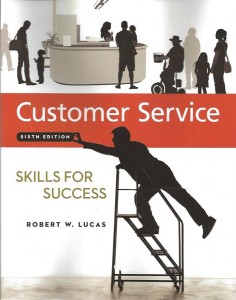Create a Positive Customer Service Culture
by Making Customers Feel Valued
Organizations are often chasing the illusive loyal customer. Various research studies have shown that it costs less to keep a good customer than it does to attract new ones through expensive marketing and incentive programs. Related to this, it seems logical to focus on converting new and occasional customers into loyal customers who return regularly and tout the organization’s benefits and customer-centric approach.
Alas, many managers, organizational leaders, and frontline customer service representatives simply do not get the whole concept of keeping loyal customers who use the organization’s products and services. These managers try to hold costs down by hiring inexperienced and low-cost employees, do not want to invest a lot of money in training staff (other than rudimentary product and service knowledge), and offer no real support for the customers they already have.
If you work for an organization and want to create an environment that is known for stellar customer service and customer-friendly people and policies, consider the following strategies to help make customers feel valued.
Hire personalities, not bodies. It takes a special person to be successful in a customer service environment. Strive to find people who are focused on interacting with others, seem to enjoy the service environment and life in general and sincerely want to help others. Product and policy knowledge can be taught to most new employees, as can the requisite skills necessary to successfully interact with new and current internal and external customers (e.g. interpersonal communication skills, knowledge about various demographic groups, team building, and other similar skills).
Prove that the organization and employees value customers. Create policies and procedures that are customer centric (e.g. return policies, hours of operation, and allow employee empowerment so that they can make decisions without a supervisor’s approval).
Train employees to recognize regular customers. People like to be seen as a person and as someone who is appreciated and valued by the organization. Customer service training sessions should stress this important fact and encourage employees to use a customer’s name when greeting and throughout a conversation. Memory improvement might be added to the training schedule to aid people in developing better memory and aid recall of customer names and faces.
Develop customer recognition and incentive programs. If customers are not rewarded for their continued business, they are likely to go elsewhere, especially if service breaks down or they encounter a problem. Reward good customers with discounts, personal communications (e.g. a greeting and coupon on their birthday, anniversary or other special occasions) and a warm welcome when they contact the organization. Instruct employees to focus on the human part of a transaction first (e.g. a warm greeting or comments about previous contacts, purchases or visits) before moving to the business of why they contacted the organization and what can be done to assist them.
Doing these simple things and others can make a world of difference to many customers and can often make the difference between a transient and a loyal customer. For additional customer service tips and strategies for creating a positive customer service environment where visitors demonstrate brand and customer loyalty as a result of receiving excellent customer service, get a copy of Customer Service Skills for Success.

